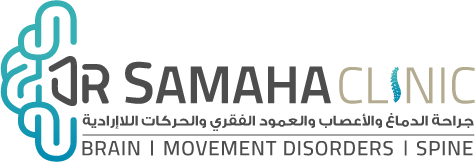مرض الديستونيا عباره عن اضطراب عصبي حركي بحيث يؤدي الى تشنجات عضليه مستمره وتسبب التواءً بالأطراف والأيدي وجذع الجسم . وقد يتسبب المرض من أسباب وراثيه أو تغيرات جينيه أثناء التخليق ، أو نقص الأوكسجين ، أثناء الولاده أو اصابه بالدماغ ، أو التهاب الدماغ، أو تعرض لتسمم معدني مثل مادة الرصاص ، أو نتيجة اعراض جانبيه للعلاجات العصبيه المهدئه .
.إن علاج هذا المرض صعب جداً ، ويتركز العلاج على تخفيف الأعراض الحركيه دون الشفاء التام
أنواع الديستونيا
- (Focal Dystonia) الديستونيا الموضعية: مثل التشنجات التي تصيب العضلات بالجفون أو جزء من الوجه أو الرقبة، أو الفم واللسان
- (Generalized Dystonia)الديستونيا العامة: وهي التي تصيب كامل عضلات الجسم والأطراف والجذع، وتظهر بالأطفال خاصه
- (Segmental Dystonia)الديستونيا المقطعية: وهي نوع من المرض يصيب منطقتين متجاورتين من الجسم كأن تصيب الأطراف العلوية والسفلية بنصف الجسم أو الأطراف العلوية اليمنى واليسرى، أو منطقة الرقبه والكتف والطرف العلوي . أو تصيب عدة مناطق موضعيه
- الديستونيا الجينية: وتنتج هذه الأنواع عن تغيرات جينيه بالكروموسومات أثناء تخليق الجنين برحم أمه، مما يؤدي الى اضطراب بكهربائية العقد القاعدية الدماغية والتي تظهر (Dy20ولغاية Dy1 من) المرض وخاصةً بالأطفال، ومن أنواع هذه الجينات الغير طبيعية
بعض انواع الديستونيا الموضعية
- تشنج وإنحناء الرقبة: تنتج عن تشنجات عضلات الرقبة بحركة متسلسله وتؤدي الى دوران الرأس وانحنائه للأمام أو للخلف أو كلاهما. وتعالج هذه الأنواع بدأيه بحقن البوتكس، أو إجراء عمليه جراحيه بالرقبة لفصل الأعصاب العنقية المحركة لعضلات الرقبة عن العضلات. وفي الحالات المستعجلة قد نلجأ الى عمليات بالدماغ لكيّ العقدة الشاحبة أو زراعة المحفزات الكهربائية الدماغية.
- تشنج الجفن: هي عباره عن تشنجات عضلات الجفون المحيطة بالعين، حيث يعاني المريض من حركات متعاقبة بالجفون وتؤدي الى اغلاق العين. وتعالج هذه التشنجات بواسطة حقن البوتكس والتي تكرر كل أربعة شهور تقريباً.
- تشنج الفك والفم: تنتج عن تشنجات بعضلات الفك والفم واللسان وتؤدي الى التواء الفك والفم.
- ديستونيا الحنجرة: هي تشنج العضلات الصغيرة بالحنجرة والمسؤولة عن احداث الصوت والكلام مما يؤدي الى انخفاض حدة الصوت الى درجة الهمس.
- ديستونيا اليد الموضعية: هذا النوع من المرض يؤدي الى تداخل بالحركات العضلية لليد مما يؤثر على الكتابة والرسم والعزف، وعادةً لا تظهر هذه التشنجات الا عند محاولة استعمال اليد وعند محاولة استعمال اليد لغرض ما، فإن الحركة تتشتت ولا تؤدي الغرض ويصاحبها ألم عضلي باليد.
علاج الديستونيا
أن العلاج التحفظي لهذا المرض لا يعطي أية نتيجة فعّاله بالسيطرة على المرض، ولذا فإن استعمال العقاقير لا يجدي نفعاً، واستعمال المهدئات العصبية لا يزيد الأمر الا الأعراض الجانبية للعلاج. هنالك طرق فيزيائية وعلاجات حكميه لأرخاء العضلات وإعطاء المريض بعض أنواع التمارين بالإضافة الى علاجات منها:
- Nticholinergics
- Muscle relaxants
- Botox injections
- Dopamine
- Baclofen
ولقد تطورت الجراحة الوظيفية باستخدام الجراحة الدماغية المصوبة لكي تدخل مجال معالجة مرض الديستونيا ( Stereotactic Functional Neurosurgery For Dystonia ) وقد أصبحت هذه الجراحة فعّاله ومنها عمليات كيّ العقدة الشاحبة الداخلية أو زراعة المحفزات الكهربائية الدماغية بالعقد الشاحبة الداخلية وهنالك نوع آخر من الجراحة التداخلية وخاصة لمرض تشنجات الرقبة ديستونيا الرقبة (Torticollis) حيث نقوم بإجراء عمليات لفصل الأعصاب المحركة للعضلات بالرقبة جراحياً

